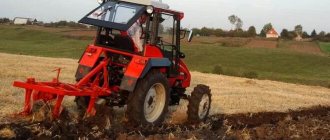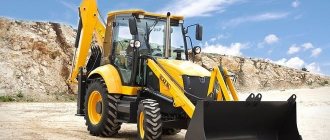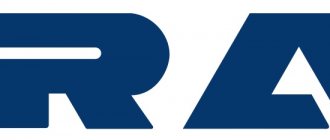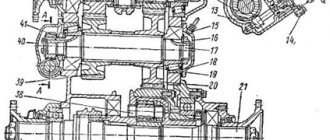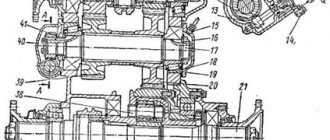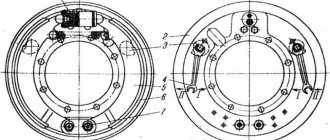The car is one of the leading domestic enterprises producing off-road trucks and military equipment. Founded in 1941 at the facilities of aircraft bomb plant No. 316 in the city of Miass, Chelyabinsk region. Since 2011, it has been part of the GAZ Group holding company. In recent years, the company has radically updated its model line. Today, UralAZ produces modern trucks with outstanding performance and attractive design.
Birth
With the beginning of the Great Patriotic War, the rapid advance of the German army forced the authorities to evacuate automobile factories from the western regions of the USSR to the Urals. According to the decision of the State Defense Committee of the USSR dated November 30, 1941, a number of workshops of the Moscow ZIS automobile plant were located in the city of Miass, in particular on the basis of an aerial bomb plant.
The production of transmission elements and engines for trucks was launched in the shortest possible time. The foundry site started working. In March-April 1942, the newly formed enterprise in Miass, Chelyabinsk region, produced its first products. There was an acute shortage of production capacity; some workshops were located under sheds in open areas. However, this did not stop the team from producing equipment that was so necessary for the front and the national economy.
First steps
Since the Soviet Union urgently needed trucks, the State Defense Committee decided on February 14, 1943 to transform the Miass Automotive Plant into the Ural Automobile Plant named after Stalin (UralZIS). At first, the ZIS-5V truck was chosen for production, which was a simplified version of the ZIS-5 model. The cars were assembled in conditions of an acute shortage of materials from vehicle kits manufactured before the war at the Moscow Automobile Plant.
The first vehicle left the plant on July 8, 1944 and reached the front twelve days later, on July 20 of the same year. Already on September 30, the 1000th ZIS-5V was manufactured, and by the end of the year 6800 units were produced.
Gas generator type trucks
In parallel with gasoline models, immediately after the war, the Miass plant began producing cars of this type. Initially, the enterprise mastered the production of the ZiS-21A model, developed at the Moscow plant. To obtain a gas mixture in this machine, dry lumps were used. Of course, in terms of characteristics it was significantly inferior to gasoline ZiS. The first gas-powered car could travel at speeds of only 48 km/h. Its carrying capacity was 2.5 tons. Later, other modifications of gas-generating vehicles were also produced. The last one was UralZiS-352.
Post-war period
After the end of hostilities, the Ural Automobile Plant continued production of the ZIS-5V. Since these vehicles were built in Miass and not Moscow, the model name was changed in 1947 to "UralZIS-5" (the letter "B" was omitted for this occasion). However, this applied only to those samples that were actually produced in the Urals from their own components. However, structurally it was an old model, produced before the war.
In 1948, at the main plant in Moscow, production of the ZIS-5 was discontinued and replaced with more promising models. However, at the Ural Automobile Plant, the assembly of trucks of a simplified design continued.
Only by 1955 did the angular UralZIS-5 acquire more streamlined shapes. A year later, the truck received a modified 85 hp engine. With. In this regard, the car, according to the new classification rules, was renamed “UralZIS-355”. In 1957, the engine power increased by 10 horsepower, and the car received the name “UralZIS-355V”. Their production continued until 1958. In total, about 200,000 units of equipment were supplied to the national economy and army.
The quality and characteristics of the UralZIS-355V are evidenced by the fact that at the All-Union motorsport competitions in 1957, all the prizes were taken by teams in the Urals. Competitors who competed on GAZ-51, GAZ-63, ZIS-150 and other trucks were defeated.
In addition to the “classic” models, the plant produced cars with steam boilers heated with wood. Fire trucks with a double cabin were also manufactured in Miass.
URAL CARS: FROM ZIS TO URAL
July 8, 2013 marks the 69th anniversary of the production of the first car at the Ural Automobile Plant in the city of Miass. The name of this city in the Chelyabinsk region is not familiar to all Russians, but the Ural brand is known to both civilian and military transport workers in Russia, and simply to technology enthusiasts who know the Ural as a reliable and unpretentious car.
The construction of the plant was started by the workers of the Moscow Automobile Plant, who at the end of the harsh war year of 1941 went to the Urals and the Volga region in order to organize the production of cars in new places as soon as possible. Five such factories were organized: in Ulyanovsk, Miass, Chelyabinsk, Shadrinsk and Irbit.
To manage the construction and installation of new plants in the Volga and Urals, the Main Directorate of Automobile Plants was created with a center in Chelyabinsk, the head of which was Ivan Alekseevich Likhachev, director of the Moscow Automobile Plant named after Stalin (ZiS).
On November 30, 1941, a decision was made by the State Defense Committee on the construction of the Miass Automotive Plant. This day is considered to be the day of the founding of the Ural Automobile Plant. By that time, some future workshop managers, as well as technologists, metallurgists, and designers had already arrived in Miass. The personnel of the Moscow Automobile Plant became the main backbone of the enterprise. Over the course of several months, they were replenished by local residents and front-line soldiers demobilized due to injury.
By January 1, 1942, 812 Muscovite car factory workers arrived in Miass; by the spring of 1942, about two thousand people were already working there. And the plant needed at least seven thousand workers. Replenishment had to be recruited locally, and native Ural personnel went to the plant. Young Miass boys and girls quickly mastered a new technique for them. In a short time, residents of the Urals and demobilized soldiers became good specialists, the core of the factory team.
Work on the construction of workshops was carried out around the clock - and this despite severe frosts and the lack of necessary living conditions. Equipment installers followed on the heels of the builders. In the still unfinished engine building, which did not even have a full roof, concrete foundations for the machines were already being laid.
In mid-March 1942, the first line for the production of piston rings was launched, on April 16, the first gearbox was manufactured, and on April 30, the first Ural automobile engine was assembled. Thus, despite the most difficult conditions, the Miass Automotive Plant began to produce products in the shortest possible time. In the remaining months of 1942, 9,430 engines and 15,375 gearboxes were made in the still unfinished building. They were sent to Moscow and Gorky for installation on cars and tanks.
Meanwhile, the front demanded more and more cars, but the capabilities of the Moscow ZiS to produce three-ton trucks were exhausted. Therefore, on February 14, 1943, the State Defense Committee made a new decision - to transform the Miass Automotive Plant from a branch of the Moscow Automobile Plant into an independent enterprise - an automobile plant. For the construction of the necessary workshops - foundries, main conveyor, chassis and others - the most stringent deadlines were set.
| Basic cars of the Ural Automobile Plant: |
On July 8, 1944, a new enterprise, called the Ural Automobile Plant named after Stalin (UralZiS), began producing ZiS-5V vehicles. The first railway train with them was sent to the front on July 20, 1944.
The Ural ZiS-5V, which arrived on the fronts of the Great Patriotic War in ever-increasing quantities, undoubtedly played a role in the defeat of the Nazi invaders. During the remaining wartime, about 12.5 thousand cars were produced from the main assembly line. Equipped with modernized engines with a capacity of 85 horsepower, manufactured with Ural quality, the cars were highly reliable and trouble-free in operation. The drivers called them “Zakhars” in a friendly way.
The war was still going on, and the plant was already developing new designs of more advanced cars for the national economy. After the Victory, production of new modifications was organized - the modernized ZiS-5, as well as UralZiS-355 and UralZiS-355V.
The post-war devastation in the country significantly affected the supply of fuel to motor vehicles, so it was decided to organize the production of gas-generating vehicles at UralZiS. The first such truck, the ZiS-21A, was assembled in April 1946, and then it was replaced on the assembly line by the Ural-ZiS-352, the last serial “gasgen” produced until 1958.
The latest modification of the three-ton truck, the UralZiS-355M with a lifting capacity of 3.5 tons, first rolled off the assembly line in 1958 and was produced until October 17, 1965. The car had a 95 hp engine. and a modern metal cabin for those years. The UralZiS-355M car could be seen in operation back in the late 80s. “Emka” (as the drivers called the car) was especially popular among the virgin lands of Kazakhstan.
At the end of the 50s, an urgent need arose in the country for a new type of car, equally suitable both for the army and for the development of new territories in Siberia and the Far East. The solution to this problem was entrusted to the team of the Ural Automobile Plant. On April 17, 1958, the Central Committee of the CPSU and the Council of Ministers of the USSR adopted a resolution on the reconstruction of the plant for the production of three-axle off-road vehicles.
Back in 1956, the Ural Automobile Plant received the first materials on the three-axle all-wheel drive NAMI-020, developed by the team of the Scientific Automotive Institute (NAMI). Taking into account the test results of this vehicle and the peculiarities of UralAZ production, its design documentation was revised, and in 1961 serial production of the Ural all-terrain vehicles Ural-375 began.
Despite the fact that the plant’s specialists had no experience in creating such vehicles, in five years they managed to launch into production a fundamentally new, modern three-axle Ural-375, which was significantly different from the trucks previously produced by the plant. Such a pace of design development and mastering the production of new complex equipment has never been known to any domestic automobile plant before.
For several years, Ural-375 was produced in pilot production workshops. And on December 21, 1965, after the completion of production of the UralZiS-355M, mass production of three-axle off-road vehicles of the Ural family began.
The Ural-375 was intended for transporting various cargoes on all types of roads and off-road and towing trailers. It was a 6x6 vehicle with a carrying capacity of 5 tons. The vehicle was equipped with a ZIL-375 gasoline engine with a power of 180 hp, a cab with a canvas top and an all-metal platform. Subsequently, a vehicle with an all-metal cabin Ural-375D, a vehicle for operation in the Far North and Yakutia Ural-375S, a southern version for areas with tropical climates Ural-375Yu, a truck tractor Ural-375S, a transport vehicle with wheels were developed and put on the conveyor formula 6x4 Ural-377. The cars were exceptionally reliable and were loved by drivers for their unpretentiousness and truly high cross-country ability.
The general dieselization of freight vehicles in the USSR did not escape UralAZ. In 1978, serial production of the Ural-4320 car with a KamAZ-740 diesel power unit began, and by 1989 the vast majority of Ural cars of various modifications were already produced with a diesel engine.
Numerous attempts to create dump trucks at UralAZ until the end of the 70s did not find support in the Ministry of Automotive Industry. Only in 1979, during the implementation of the Food Program, the plant was given the real task of creating a special transport and technological vehicle - an agricultural dump truck.
The design of this car - model Ural-5557 - was created on the basis of the diesel Ural-4320. It began production at the end of 1983 and had a dump body with the installation of extension sides and unloading on two sides for transporting mainly crushed feed and silage.
Creative work on creating new promising cars at the plant continued. Thus, during 1984–1985, a new family was tested: the three-axle Ural-43223 with an air-cooled diesel engine and the four-axle Ural-5323 with a supercharged Kamaz engine. In the early 1990s, their assembly in small batches began. In Kustanay (Kazakhstan), under a license from the German company KHD, an engine plant was built that equipped the Ural-43223 and Ural-43205. Subsequently, the Ural-5323 was also equipped with these engines.
In February 1986, the millionth Ural car was assembled on the main assembly line of the plant. These machines were sold to almost all continents and were found in the armies of all socialist countries, as well as in Vietnam, China, Chile, Angola, Egypt and many other countries.
The development and production of a new type of vehicle - a tracked snow and swamp transporter - were also entrusted to the team of the Ural Automobile Plant. The work was carried out by designers and testers in close collaboration with US. Industrial production of the Ural-5920 transporter with a lifting capacity of 8 tons began in 1986. Ural-5920 has found wide use in the oil and gas regions of the Tyumen region, among subsoil prospectors and as rotational vehicles, in areas of intensive construction in the Far North, where the use of conventional transport is impossible and economically inexpedient.
The difficult situation in the country in the early 1990s caused a sharp decline in production. Due to the collapse of the Soviet Union, the products of the Kustanai Engine Plant were irretrievably lost. And in 1994, due to a fire that disabled the KamAZ engine plant, diesel engines from the Yaroslavl Motor Plant had to be installed in the Urals. The Ural-4320-10 cars with YaMZ-236 engines began to be produced, and a little later - the Ural-4320-31 with the more powerful YaMZ-238.
New modifications continue to be created on the basis of these vehicles: to replace KrAZs, which have now become foreign cars, a long-wheelbase modification Ural-4320-30 with a lifting capacity of 12 tons was developed, a Ural-55571 dump truck was created for builders, and in 1995 a two-axle model Ural-43206 was released.
Work on further development of Ural-43223 modifications into production was considered ineffective, and in the current economic conditions simply impossible. International cooperation seemed promising. In April 1992, a license agreement was signed with the Italian company on the joint production of a batch of heavy-duty Iveco-Ural dump trucks for the needs of the country's oil and gas complex. In 1994, this partnership was significantly expanded.
A new agreement was signed to create a joint venture to produce a new range of cars. Founders of the joint venture: Ural Automobile and the main customer of cars is the Gazprom concern.
One of the joint venture’s production facilities is the Iveco cabover cab, which is successfully used on Ural vehicles. In 1995, the four-axle Ural-5323-22 with this cab was presented to the general public, and in 1996, the three-axle Ural-6361, which is planned to become the main base model of the UralAZ of the early 21st century.
HIGH PERFORMANCE TRACTOR VEHICLE Ural-4320-01
The main external difference between the Ural-4320 and the Ural-4320-01 is the installation of a new platform with a flat floor, without wheel arches, which ensured more convenient cargo stowage. And in 1993, it was replaced in production by the Ural-4320-10 with the YaMZ-236 engine. The Ural-4320-01 cargo truck with a Kamaz engine, shown in the drawings and drawings, is a typical representative of the family of all-wheel drive three-axle vehicles of the Ural Automobile Plant. It has been produced since 1986, when it replaced the Ural-4320 in production.
The vehicle is designed for transporting goods, people and towing trailers on all types of roads and off-road. “Urals” were developed on the instructions of the military, and therefore the entire design of the vehicle is subordinated to reliability, obtaining maximum cross-country ability parameters and effective use in difficult conditions.
Short front and rear overhangs, high-mounted vehicle components protected from damage, and large-diameter tires allow you to overcome hills with an inclination of up to 30 degrees, ravines, and, in combat conditions, trenches. The tire pressure regulation system helps the driver when negotiating terrain with marshy or loose soil or snow. The unit sealing system protects vehicle components from water ingress when crossing water barriers up to 1.5 m deep.
The traction winch helps when you get stuck. With its help, from a distance of up to 65 meters, you can pull the car to terrain suitable for independent movement.
Diesel V-shaped engine KamAZ-740.10 with a power of 210 hp. provides high speed movement with a load of up to 5000 kg both off-road and on roads (up to 85 km/h), as well as the ability to operate the vehicle as part of a road train with a trailer weighing up to 11,500 kg without loss of dynamics.
A fuel volume of more than 400 liters provides a range of about 850 km. This allows the machine to operate away from a developed road network, which is necessary in the geological exploration and oil production industries.
Convenience for the driver was not forgotten when developing the design of the Urals. Power steering, an adjustable seat, and an efficient cabin heater provide sufficient comfort. And if it is necessary to work in conditions of very low temperatures - down to minus 50°C - another independent cabin heater is installed. To start the engine at low temperatures, there is a system to facilitate cold engine starting.
Transporting goods and people in a car platform is far from the main purpose of the car. Over the course of its history, more than 1,000 different bodies and installations have been developed on the Ural chassis of various modifications. To achieve this, the vehicle can be equipped with two power take-offs to drive various equipment; it has parallel frame side members with horizontal shelves above which there are no protruding parts that would interfere with the placement of equipment.
Join our group “Courage 2004”
Share on social networks:
Rearmament
In 1957, a fundamental change in the model range took place at the Ural Automobile Plant. The veteran ZIS-5, designed in 1933, was finally taken off the production line. Its place was taken by the modernized UralZIS-355M. According to experts, the car was superior to its “classmate” ZIL-164, produced in Moscow.
The vehicle has proven itself in difficult conditions for equipment - during the development of uninhabited wild virgin lands in the regions of Southern Siberia, Kazakhstan, and the Volga region. It was at that time that the Urals showed themselves to be the most passable cars in the Soviet Union. Before being discontinued in 1965, over 190,000 examples of the 355M series were built.
What awaits us? Prospects for the Urals
In conclusion of the article, let me express a few thoughts on the issue of the further development of the Urals and its place in the future of Russia.
The Ural economic region has a highly developed diversified economy with significant reserves of its own natural resources. It should be noted here that such a combination is also typical for some developing countries, which experts predict will soon become one of the centers of the world economy.
The Ural region has an excellent economic and geographical position: it borders both highly developed and resource areas, and is an intermediate link between the European and Asian parts of Russia (which also implies the development of a transport network).
By maintaining the current industrial and agricultural potential and supplementing them with some features of the post-industrial economy (informatization, development of the service sector and infrastructure), the Urals can once again take a leading position in our country.
One of the possible ways to achieve this goal could be the creation of a powerful tourism sector and recreational sector. There are prerequisites. Firstly, this is the significant extent of the Urals from north to south and, as a consequence, the diversity of landscapes. Driving along highways, you can cross the taiga and find yourself in the steppe zone in just a day. Secondly, there is a huge number of natural monuments. Thirdly, this is history, which has left a large number of historical attractions, some of which are unique.
Although there are serious problems, including: poor environmental conditions, an underdeveloped transport network, lack of well-thought-out tourist routes, and a small amount of information about many attractions. Fortunately, all of them can be solved.
Whether these hopes will be justified or not depends largely on the residents of the Urals themselves. It depends on whether they want the Urals to take first place in the ranking of the most popular attractions in Russia or first place in the list of the dirtiest places in the country.
And the Uraloved website will try to make its modest contribution to the common cause - to tell about the natural and historical attractions of the Urals that are worth seeing.
© Pavel Semin, 2011 Uraloved.ru
To prepare the article, maps from the following sources were used:
Ogonovskaya I. S. Historical atlas of the Urals. — Ekaterinburg: Publishing House “Socrates”, 2006
Vinogradov N. B., Chagin G. N., Shkerin V. A. History of the Urals from ancient times to the end of the 18th century: A textbook for primary school students. Ekaterinburg: Socrates Publishing House, 2005
Support Uraloved
New stage
In 1962, UralZIS was renamed UralAZ (Ural Automobile Plant). A year earlier, a fundamentally new car, the Ural-375(D), was launched, which became the most recognizable model of the enterprise. A heavy truck with permanent all-wheel drive, large single tires on three axles and a powerful 7-liter gasoline engine became the main army transport vehicle.
The 375 series was actively exported mainly to friendly partner countries. They could be found in the steppes of Mongolia and on the autobahns of East Germany.
For various weapons and military equipment
As already mentioned, the military was primarily interested in the new car, and the UralAZ designers were guided by their requirements. Most of all, the Ural-375, or more precisely its modification with an all-metal cabin, the Ural-375D, is known for its use of the Grad multiple launch rocket system (MLRS) in combat vehicles. But before the car was completed, it still had to be tested as part of systems and complexes of weapons and military equipment (WME).
Almost all of the first production cars were taken by the Ministry of Defense. “I didn’t know what complexes or weapons systems our vehicles were used for,” recalls Anatoly Titkov. “We were told that the Ural-375 will have up to two hundred different installations.” Thus, two Ural-375 samples from the first industrial batch were transferred to the MLRS developer, where they were used for the installation of BM 2B5 prototypes. From March 1 to May 1, 1962, in the Leningrad Military District (at the Rzhevka training ground), state military testing of the Grad system was carried out, including fire tests. During the tests, shortcomings were identified in the design of the combat vehicle, which affected both the artillery unit and the chassis. Regarding the chassis, there were complaints about the rear axle; it had to be modified; During testing, cracks appeared on the chassis frame, so the frame had to be strengthened.
Anatoly Titkov: “I only found out about Grad when the military came to us and said that our bridges were no good - they were bending. This was 1962. The bridges turned out this way because there was no necessary equipment to stamp the beam for the bridge. At that time, we could not even stamp a regular rear axle beam. Therefore, the middle part was cast, then pipes were pressed under the axle shafts, so-called stockings, then a flange was welded, the brake shield was installed on it, and then the wheel hub was placed on the stocking. The axle shaft was secured with bolts. In order for the bridges to withstand heavy loads, I came up with spline connections, and the axle shaft began to be connected not with bolts, but with splines. There was no beam, so we made ribs on the middle part and strengthened the axle. There was no equipment, we had to invent it.”
In general, the solutions incorporated into the design of the Ural-375 were correct, which was confirmed by subsequent tests of the chassis as part of the BM 2B5.
1970-1980s
In 1976, under the leadership of the automotive industry, a production association was founded in Miass, which included various companies in the engineering sector from Chelyabinsk. In 1977, UralAZ began production of the 4320 series. "Ural-4320" resembles the 375D model, but is equipped with a KamAZ diesel engine.
Later, the power unit was replaced by a diesel engine from the Yaroslavl Motor Plant. The external parts of the car, including the radiator grille, were also restyled. Externally, the two trucks are easy to distinguish from each other.
In the early 1980s, the Ural Automobile Plant launched the production of dump trucks based on the 5557 chassis. At the end of the 1980s, the development of the heavy four-engine Ural-5323 began. On January 21, 1986, a significant event took place for the enterprise - the millionth car rolled off the assembly line.
Dash to Siberia
According to most historians, Ermak’s campaign (1582-1585) was an important event, almost a breakthrough into the Middle Urals and Siberia. This is true, but it is important to note that the peoples of Siberia paid tribute to Russia at the beginning of the 16th century (that is, they were dependent on it), but then refused. It was this refusal, as well as the increasing frequency of attacks on Russian possessions in the Urals, that were one of the reasons for the campaign. One way or another, it was after the “conquest of Siberia by Ermak” that active settlement of the Urals by Russians began.
Perhaps the historical campaign also became an incentive for other explorers. In any case, just half a century later, Russian people set foot on the shores of the Pacific Ocean. In addition, Ermak’s campaign became the subject of several famous paintings. For example, for this one.
Not much is known about the hike itself, and even less can be said within the scope of this article. It is impossible to say who was the main initiator of the campaign, but most likely it was the Stroganovs, who were fairly annoyed by the raids of the Siberian Tatars.
The campaign began in 1582 (according to another version, in 1581). Ermak with a small squad rose to the middle reaches of the Chusovaya River, descended successively along Tagil, Tura and Tobol to the confluence of the Tobol River with the Irtysh, where the capital of the Siberian Tatars was located - the city of Kashlyk. Having defeated the Tatar detachment, Ermak turned north, winning several more victories. But in 1585 he died in a clash with a detachment of Tatars. His squad broke up.
Soon after the death of Ermak, a large Russian government army entered Siberia and finally conquered this territory. Tobolsk, founded in 1587, became the center of Siberia.
In market conditions
With the collapse of the USSR and the subsequent collapse in the economy, the history of the Ural Automobile Plant did not end. The project to create the Ural-5323, to the credit of the administration, was brought to practical implementation. They were produced until 1993.
The company sought to strengthen cooperation with other car manufacturers. In 1994, UralAZ founded a joint venture with Iveco and Gazprom to expand the production complex. New areas were built and old areas were modernized, as a result of which the plant's productivity increased to 3,000 trucks and 9,000 cabs per year.
New vehicles were developed, equipped with comfortable Iveco T-series cabins and adapted to the difficult conditions of Siberia. Two years later, in 1996, mass production of the Ural-43206 (a two-axle version of the Ural-4320) began. In 1997, UralAZ, together with Deutz AG, founded another joint venture for engine assembly.
Economic development of the Urals in the 18th-20th centuries
Twice in its history the Urals became one of the most important economic and strategic regions of the country. The first time this happened during the reign of Peter I and was associated with the name of the Demidov factory owners and landowners. Thanks to the construction of a large number of iron and copper smelting plants, the Urals became the country's most important metallurgical base, maintaining this status for more than a hundred years. During the Northern War with Sweden, Ural factories supplied the army with cannons and cannonballs. In the 18th century, Russia became the world leader in iron smelting and maintained this status until the middle of the next century.
But, of course, the leadership of the Urals rested not only on developed metallurgy, but also on the extraction of unique treasures - gold, platinum, gems and semi-precious stones. Gold was found in the Urals back in 1745. Platinum was discovered in the first quarter of the next century. The first discoveries of gems date back to the 17th century, but the peak occurred in the 19th century. It was then that diamonds and emeralds were found in the Urals. Well, the “signature” Ural stone - malachite - was mined back in the 18th century.
The second heyday of the Urals occurred during the years of industrialization (1928-1941) and World War II (1939-1945). During the first three five-year plans, huge metallurgical and engineering plants were built here, such as the Magnitogorsk and Nizhny Tagil plants, the Uralmash heavy engineering plant in Yekaterinburg, etc. During the war, many enterprises were evacuated from the occupied areas to the Urals.
The work of millions of Urals residents during the war greatly contributed to the victory. In addition to all that has been said, the Urals possessed the most important strategic reserves of manganese (the Polunochnoye deposit in the north of the Sverdlovsk region). It was the only one available at that time. Manganese was used to make tank armor. The significance of the deposit was so high that in Nazi Germany they developed a sabotage project on it, which, fortunately for our country, remained unrealized.
At the end of the twentieth century, the rate of economic growth began to fall again, and the outflow of population to other regions of the country began. Nevertheless, the Urals are still one of the most important economic regions of the country, holding first or second places in terms of important industrial indicators. In addition, we should not forget that the Magnitogorsk Iron and Steel Works is still the largest enterprise in the industry in the country.
So, perhaps the current pause is just a lull before the next leap.
Through hardship to the stars
However, by 1998 the company had accumulated huge debts, and the plant found itself in a pre-bankruptcy state. Although Ural cars were distinguished by enviable cross-country ability and high-torque power, they consumed a lot of fuel, which made them ineffective for commercial use. Defense orders decreased and did not cover costs. The government introduced external management of UralAZ and assigned experienced managers to the enterprise.
In a matter of years, the new team managed to increase production and introduce cost-saving measures along the way. In 1999, the factory workers entered their team into the Europe Truck Trial rally, which increased the prestige of the brand. In the same year, work began on a new workshop for bodies and vans, providing production of up to 1000 chassis of the 3255 series, and a new foundry, designed for 2400 tons of castings per year, was put into operation. UralAZ celebrated the New Year 2000 as an industry leader, getting into the top 100 in the “Reputation” category.
In 2001, UralAZ was integrated into the RusPromAvto automobile holding, and in 2005 it became part of the GAZ Group. In 2011, serial production of the heavy Ural-6370 began. Since 2015, the production of the new Ural Next family has been launched, which is the successor to the 4320 series.
Historical models
Over seven decades of operation, UralAZ has produced many worthy cars. Let us list the main vehicles produced during the Soviet period:
- ZIS-5V. Manufactured from 1944 to 1947 according to 1933 drawings.
- "UralZIS-5" (1947-1955). Had minor changes compared to the ZIS-5V.
- "UralZIS-21A" (since 1946). He worked on wood.
- "UralZIS-355" (1956-1958). Modification of "UralZIS-5" with increased engine power, there are different versions.
- "UralZIS-355M". Two-axle trucks built from 1957/1958 to 1965, a modernized version of the UralZIS-355.
- "Ural-375" (1961-1992). Heavy three-axle truck in various versions, intended mainly for military purposes.
Start of production
According to the order dated July 20, 1959, work began to prepare for the serial production of trucks. Due to the workload of the main production sites of the plant for the assembly of the UralZis-355M vehicle, it was decided to deploy the assembly of new trucks at the experimental facilities of the automobile plant. Despite all the difficulties, as planned by the Party’s plans, on November 7, 1960, on the next anniversary of the October Revolution, the first production Ural-375 truck led the festive column of automakers at the workers’ demonstration.
In the first years of production, cars were mainly supplied to the needs of the country's armed forces. The vast majority of trucks were produced in a military version, with a three-seater cab with a canvas top, an all-metal welded platform, equipped with arches and a canvas awning. Folding seats were installed along the sides of the platform for transporting personnel.
To drive peripheral units and devices, the car was equipped with a power take-off box and an additional power take-off box from the transfer case input shaft. A certain number of trucks were equipped with a drum winch for self-pulling, the length of the winch cable was 65 meters, and its draft force was 7 tons. Compliance with the indicated technical parameters and characteristics of the vehicle was confirmed during comparative tests carried out in 1961-1963 at NAMI.
Based on the test results, recommendations for further modernization of the vehicle were also developed. So, it was decided to abandon the clutch that disconnects the front axle, and the winch was moved to the rear of the frame. Finally, the car acquired the originally designed all-metal cabin and a four-section windshield. A more efficient heating system was also installed in the cabin.
Modern products
In the post-Soviet period, the Ural Automobile Plant mastered the production of the following models:
- "Ural-3255". A truck with a body for passenger transport, implemented on different chassis.
- "Ural-4320" (since 1977). Bulk trucks for military and civilian needs.
- "Ural-43206" (since 1996). Two-axle version of the Ural-4320.
- "Ural-4420". Tractor based on the Ural-4320.
- "Ural-5323" (since 1991). Heavy all-terrain four-axle vehicle.
- "Ural-5557" (since 1984). Dump truck based on Ural-4320.
- "Ural-5831". Successor to Ural-5557.
- "Ural-6370" (since 2011). Three-axle universal military truck in various versions.
- "Ural-63704" (since 2011). Tractor based on the Ural-6370.
- Ural Next (since 2015). Successor to Ural-4320.
- Ural M (since 2015). 3-4-axle civilian models with a cabover design.
- Ural-6370 (since 2016). A family of tractors, dump trucks and special equipment with a lifting capacity of up to 19.5 tons.
- Ural CNG (since 2016). Hood models running on methane.



